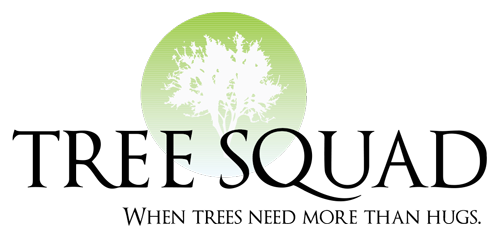Cankers
Identification and Management of Cankers
The best canker management is preventive. Keeping trees healthy and stress free will reduce the risk of infection considerably. If a tree does have canker, the entire infected area should be removed, sterilizing the pruning tools between cuts. Pruning should not be done during wet or humid weather to minimize the spread of disease. Avoid wounding trees when doing yard work or mowing as this leaves the tree vulnerable to infection. Consult with your arborist for positive canker identification and for any other recommended treatment.
Botryosphaeria
(Botryosphaeria dothidea)
Attacks:
Horsechestnut, Redbud, Dogwood, Beech, Walnut, Tulip Poplar, Sweetgum, Crabapple, Pine, Oak, Rhododendron, Azalea, Rose, Willow, Elm, Yew, and many other woody ornaments.
What you can do:
A fungus that can cause severe damage or death, it usually gains entrance through wounds in the bark. To reduce its impact, isolate the canker as much as possible. Prune affected branches, remove fallen limbs, fruit, and dead foliage. Ask your arborist what other steps can be taken to increase the health of the tree.
What you will see:
- Rough, sunken, dark-brown to black areas around wounds
- Blackened or dark-brown wood
- Dead bark around cankered area
- Dead leaves on infected branches
- Elongated cankers along the branch
Cytospora
(Cytospora kunzei var. piceae)
Attacks:
Colorado blue spruce, Norway spruce, Douglas fir, hemlock, and balsam fir.
What you can do:
In locations of high humidity, this disease can kill mature trees. Avoid bark and stem injuries, prune affected branches, and reduce environmental stress. Control insects and mites, and reduce the moisture conditions. Ask your arborist what other steps can be taken to increase the health of the tree.
What you will see:
- Affects low branches and progresses upward
- Cankers form at the base of small, infected branches
- Elliptical
- Diamond shaped
- Bluish white substance covers the cankered area
Eutypella
(Eutypella parasitica)
Attacks:
Sugar Maple, Red Maple, Norway Maple, and all related hybrid varieties
What you can do:
Alleviate environmental stress as much as possible. Only prune these trees in dry weather, never when moisture is present. Remove any tree with a canker on the main trunk. Ask your arborist what other steps can be taken to increase the health of the tree.
What you will see:
- Callus formation around a branch stub or wound
- Sunken dead area in the center of the callus
- Raised areas of callus with wavelike appearance
- White mycelial fans under callus tissue
- Dead bark remains attached to the canker
Hypoxylon
(Hypoxylon mammatum)
Attacks:
Quaking Aspen, Big-toothed Aspen, non-fatal on other species.
What you can do:
This disease develops rapidly, making infected trees terminal. Prevention and removal of infected plants are the only methods of management. Never prune or wound the tree during humid seasons, and remove infected trees as soon as possible.
Young Cankers:
- Sunken, yellowish-orange areas with irregular margins
- Surface patches of black and yellowish-white
- White fungal threads on the tissue under the bark
Old Cankers:
- Rough and blackened wound at the center
- Outer bark is raised in blisterlike patches
- Bark falls off, exposing crumbling, black surface.
Nectria
(Nectria galligena, Nectria cinnabarina)
Attacks:
Maple, Honeylocust, Apple, Aspen, Basswood, Birch, Elm, Oak, Walnut, and other hardwood trees.
What you can do:
Infections can be fatal, but proper care can prolong the life of the infected tree. Prune only in dormant seasons, and do not prune when there is moisture present. Reduce environmental stress and enhance tree health.
What you will see:
- Blister-like lesions on twigs, branches, and trunks
- Young cankers are slightly sunken areas on the bark
- Old cankers are elongated and target-shaped
Sphaeropsis
(Sphaeropsis sapinea)
Attacks:
Red, Austrian, Scots, Mugo, White, and Ponderosa pine; spruce; and Douglas fir
What you can do:
A fungus that first infects the outer reaches of the tree, it is fatal once a canker forms on the main stem. Proper care can prolong the life of an inf ected t ree. Reduce environmental stress, prune only in the dormant season, and remove all fallen limbs and dead foliage. Ask your arborist what other steps can be taken to increase the health of the tree.
What you will see:
- Cankers with enormous amounts of sap
- Bleeding cankers
- Gray to black staining
- Black spots under the bark in the canker


